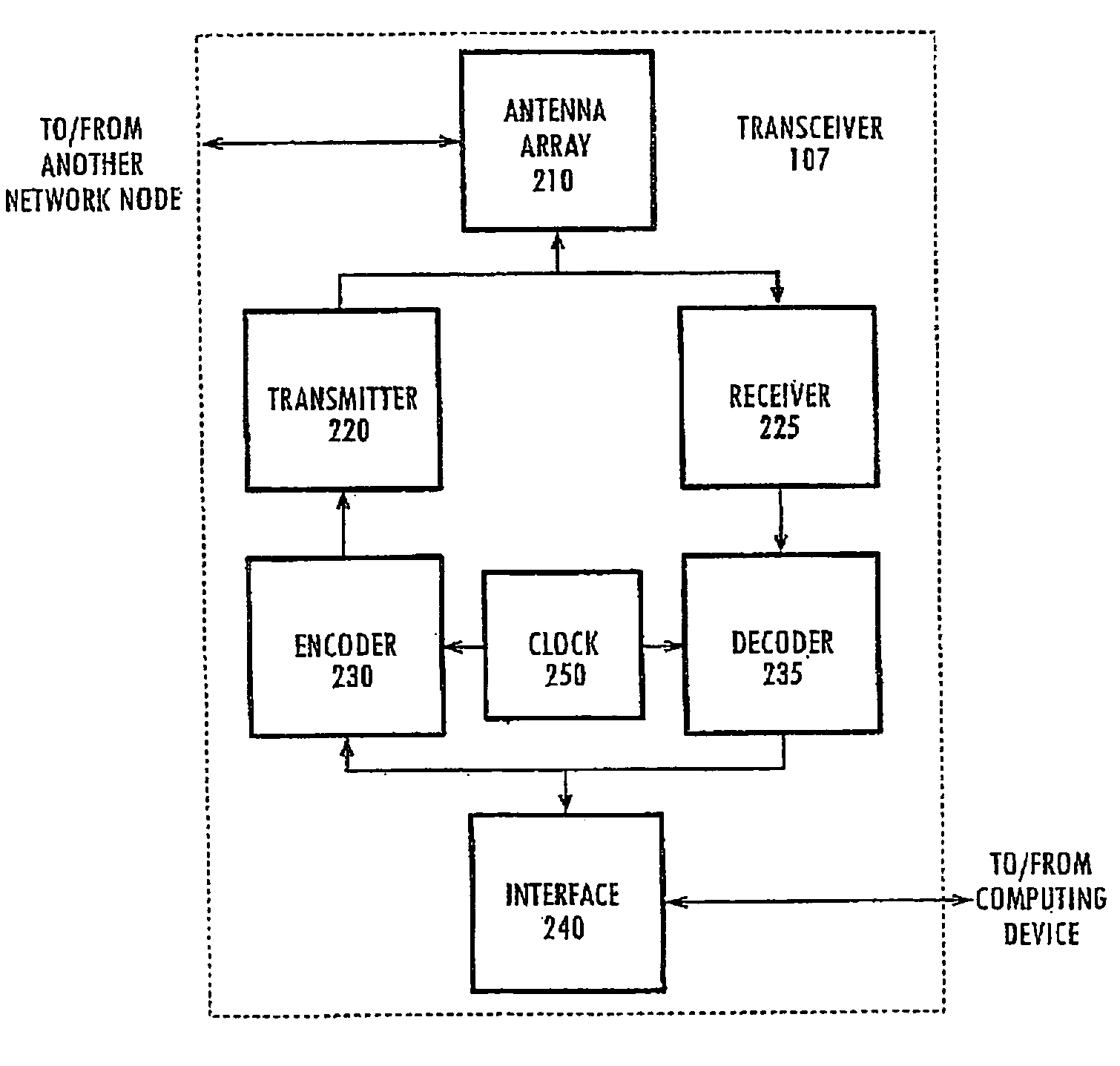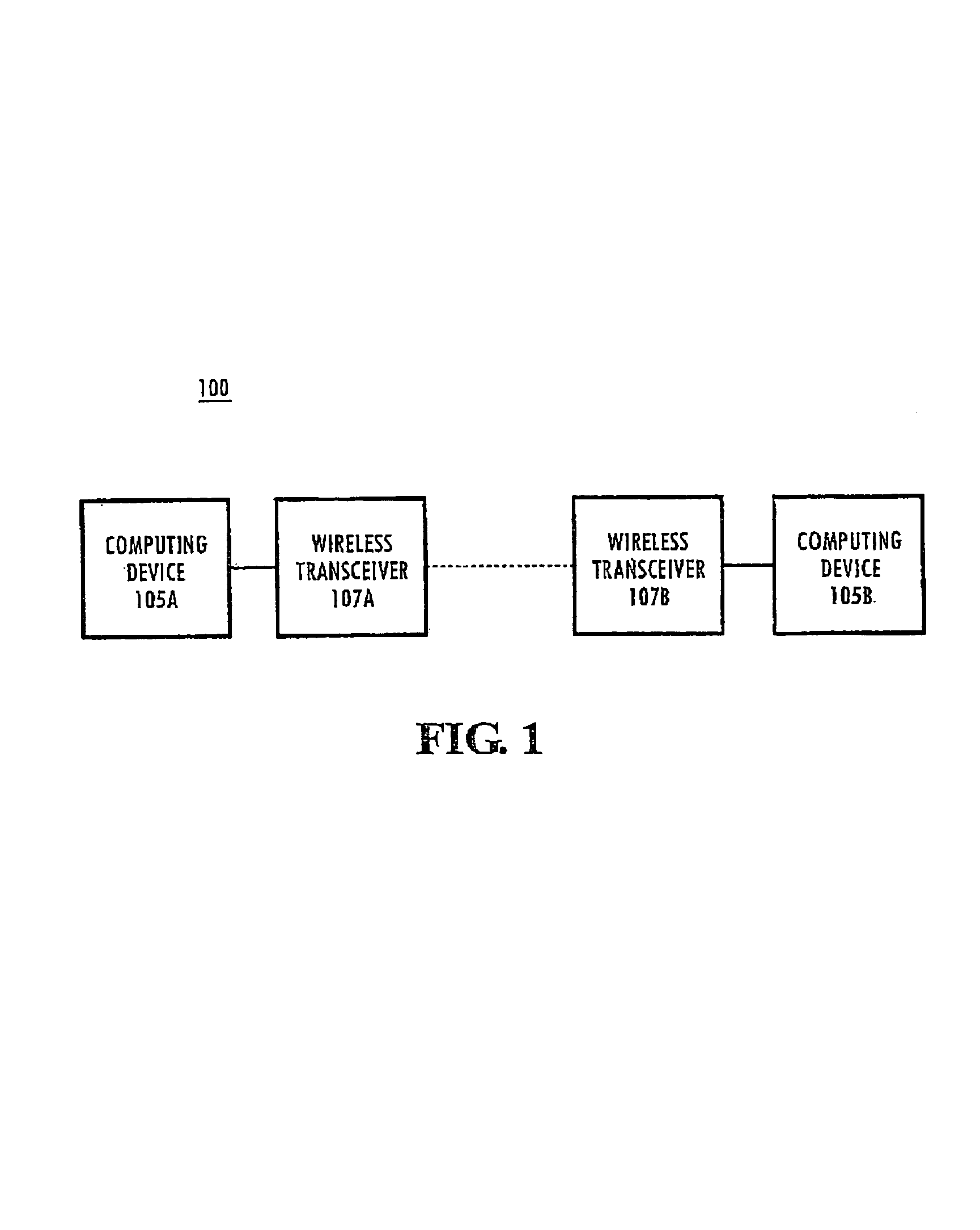Frequency offset differential pulse position modulation
a pulse position and frequency offset technology, applied in the field of computer networks, can solve the problems of increasing operating and maintenance costs, reducing the palatable structure of structured wiring systems, and increasing the cost of moving an average ethernet unshielded twisted pair (“utp”) connection of such a lan, so as to increase the amount of data, reduce blanking time, and increase data rate
- Summary
- Abstract
- Description
- Claims
- Application Information
AI Technical Summary
Benefits of technology
Problems solved by technology
Method used
Image
Examples
Embodiment Construction
[0028]Embodiments of the present invention are now described with reference to the Figures where like reference numbers indicate identical or functionally similar elements and the left most digit(s) of each reference number corresponds to the Figure in which the reference number is first used.
[0029]FIG. 1 illustrates a WLAN system 100 of an embodiment of the present invention. The system 100 includes a computing device 105A, a wireless transceiver 107A, a wireless transceiver 107B and a computing device 105B. Computing device 105A is coupled to wireless transceiver 107A, which together serve as a node on WLAN system 100. Computing device 105B is coupled to wireless transceiver 107B and together represent a second node on the network system 100. Computing device 105A communicates with computing device 105B by utilizing wireless transceiver 107A to transmit radio frequency (“RF”) frequency offset differential pulse position modulation (“FO-DPPM”) signals to wireless transceiver 107B, ...
PUM
 Login to View More
Login to View More Abstract
Description
Claims
Application Information
 Login to View More
Login to View More - R&D
- Intellectual Property
- Life Sciences
- Materials
- Tech Scout
- Unparalleled Data Quality
- Higher Quality Content
- 60% Fewer Hallucinations
Browse by: Latest US Patents, China's latest patents, Technical Efficacy Thesaurus, Application Domain, Technology Topic, Popular Technical Reports.
© 2025 PatSnap. All rights reserved.Legal|Privacy policy|Modern Slavery Act Transparency Statement|Sitemap|About US| Contact US: help@patsnap.com



